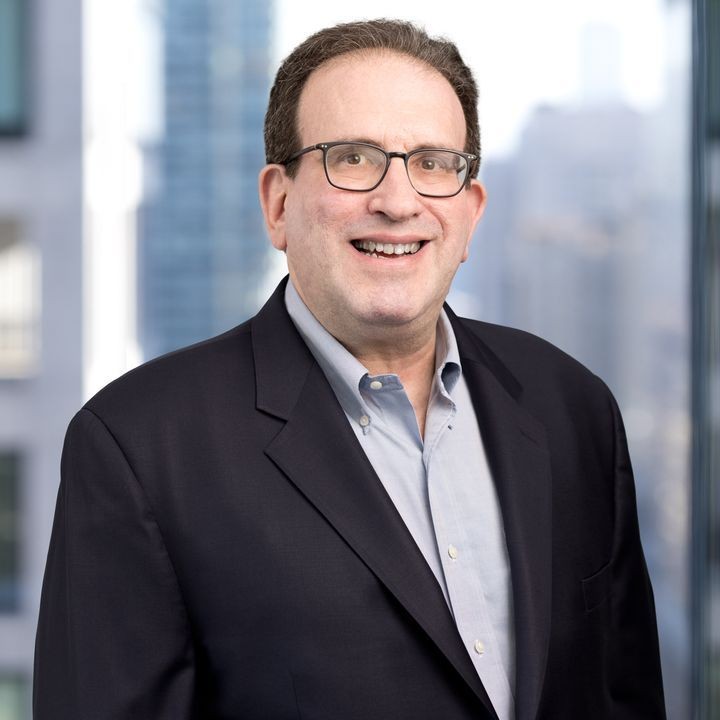Amendments to the New York State HERO Act Signed into Law
Client Alert | 7 min read | 06.23.21
On June 11, 2021, New York Governor Andrew Cuomo signed S06768 (Amendments), amending the New York State Health and Essential Rights Act (HERO Act), into law. Crowell & Moring previously addressed the HERO Act, which permanently codified COVID-19-related health and safety protocols, here. The Amendments modify and clarify several important aspects of the HERO Act, including but not limited to the definitions of “work site” and “employee,” the implementation of the model airborne infectious disease exposure prevention standards (Model Standards) and employers’ own airborne infectious disease exposure prevention plans (Plans), limiting employees’ private right of action, and narrowing the scope of authority of joint labor-management workplace safety committees to be established by November 1, 2021. The Amendments also provide the New York Department of Labor (NYDOL) until July 5, 2021 to publish the Model Standards. Also, in response to the State’s achievement of reaching the seventy percent vaccination rate of adults, effective June 15, 2021, Governor Cuomo announced that most of the State’s remaining COVID-19 restrictions are lifted, except for the mask requirement for unvaccinated individuals and in certain settings (e.g., large-scale indoor event venues, pre-K to grade 12 schools, public transit, homeless shelters, correctional facilities, nursing homes and health care settings per CDC guidance).
Updated Definitions of Employee and Work Site. The Amendments include “individuals working for digital applications or platforms” as covered employees. The definition of “work site” has been narrowed to “any physical space, including a vehicle, that has been designated as the location where work is performed over which an employer has the ability to exercise control.” (amendment emphasized). The Amendments specify that “work site” does not “include a telecommuting or telework site unless the employer has the ability to exercise control of such site.”
Implementation of the Model Standards and Employer Plans. The Amendments establish an extended timeline regarding when the NYDOL must publish the Model Standards, and when employers must implement their Plans. Employers must establish their Plans within thirty days after the NYDOL publishes the “model general standard and the model standard relevant to the industry.” Employers must provide their Plan to their employees (1) “in writing in English and in the language identified by each employee as the primary language of such employees within thirty days after adoption of” their Plan; (2) “within fifteen days after reopening after a period of closure due to airborne infectious disease,” and (3) “to a newly hired employee, upon hiring the new employee.” Employers permitted to operate as of July 5, 2021 must provide their Plan “to all employees within sixty days after the [NYDOL] publishes the model standard relevant to the industry.”
The Amendments clarify the obligation of employers to designate “one or more supervisory employees to enforce compliance with” with their Plans and other applicable “federal, state, or local guidance related to avoidance of spreading an airborne infectious disease” by explicitly stating that “[n]o individual who is not a supervisory employee shall have responsibility for overseeing compliance with the requirements” of their Plans.
Furthermore, the requirement to post Plans “in a visible and prominent location within each” work site does not include posting it in a vehicle that would otherwise qualify as a work site because it is designated as the location where work is to be performed.
Narrowed Scope of the Authority of Joint Labor-Management Workplace Safety Committees. The Amendments specify “that an employer that already has a workplace safety committee that is otherwise consistent with the requirements of [the Act], shall be exempted from creating an additional safety committee” thereunder. Employers are not required to permit “more than one committee per” work site.
The Amendments narrow the scope of workplace safety committees’ authority, including but not limited to (1) reviewing any policy “relating to occupational safety and health” rather than “any provision of the workers’ compensation law”; (2) regularly scheduling a meeting during work hours at least once a quarter that “shall last no longer than two hours, ” and (3) attending training not to exceed four hours without suffering a loss of pay.
Limitations on Employees’ Private Right of Action. The Amendments clarify that an “employee may bring a civil action seeking injunctive relief . . . against an employer alleged to have violated the airborne infectious disease exposure prevention plan in a manner that creates a substantial probability that death or serious physical harm could result to the employee ….” (amendment emphasized).
The Amendments include several other provisions that have the effect of limiting the civil actions that can be commenced by employees. Before commencing a civil action pursuant an alleged violation of the HERO Act, an employee must provide the employer with at least thirty days’ notice of the alleged violation, “except where an employee alleges with particularity that the employer has demonstrated an unwillingness to cure a violation in bad faith.” Employees “may not bring a civil action if the employer corrects the alleged violation.” In all circumstances, an employee must bring such a civil action “within six months from the date the employee had knowledge of the violation alleged in such civil action.”
The Amendments repeal a provision authorizing courts to award liquidated damages. Also eliminated is the provision permitting parties to seek sanctions if an action, “defense, counterclaim, or crossclaim . . . is found upon judgment to be completely without merit in law and undertaken primarily to harass or maliciously injure another.” By contrast, if a court finds an employee’s action “frivolous,” then it “may award to the employer costs and reasonable attorneys’ fees,” which “may be assessed against the employee, the employee’ attorney or both.
Effective Dates. The NYDOL must issue the industry-specific standards by July 5, 2021, sixty days from the HERO Act’s enactment. The Amendments do not extend the effective date of the joint labor-management workplace safety committee provisions, November 1, 2021, 180 days after enactment.
Preparation for Compliance. In order to prepare for the publication of the NYDOL Model Standards, and the actions to be taken thereafter, employers should consider the following:
- continue to evaluate their return-to-the-workplace guidelines and facilities to identify areas that may need to be addressed to comply with the applicable safety mandates;
- review their current safety plan to employees and communicate to employees the importance of complying with their responsibilities thereunder;
- designate supervisory employees who are responsible for enforcing compliance with the safety plan;
- provide supervisory and managerial employees with both policy compliance and anti-retaliation training;
- post the current safety plan at work sites as defined by the HERO Act;
- consider the potential budgetary implications raised by additional expenditures needed to comply with the HERO Act;
- begin preparing to incorporate these new provisions into their employee handbooks;
- devise a plan for dealing with greater employee involvement in health and safety policies;
- continue to comply with applicable federal, state and local guidelines, and
- consider the potential impacts of the numerous other federal, state and local law and orders that have been issued in response to the COVID-19 pandemic and requirements regarding family leave, sick pay, and other issues.
Lifting of Most COVID-19 Restrictions. On June 15, 2021, Governor Cuomo announced that the State’s New York Forward industry specific guidelines — including capacity restrictions, social distancing, cleaning and disinfection, health screening, and contact information for tracing — are now optional across commercial settings, including but not limited to retail, food services, offices, gyms and fitness centers, amusement and family entertainment, and personal care services. Unvaccinated individuals, however, must continue to wear masks in accordance with federal CDC guidance. Further, the State’s health guidelines continue to be in effect for large-scale indoor event venues, pre-K to grade 12 schools, public transit, homeless shelters, correctional facilities, nursing homes, and health care settings in accordance with CDC guidelines.
The State’s COVID restrictions remain in effect for large-scale indoor event venues, now defined as indoor venues that hold more than 5,000 attendees. Consistent with the State’s implementation of the CDC guidelines, proof of vaccination can be used to eliminate social distancing and remove masks for fully vaccinated individuals. Unvaccinated or unknown vaccination status individuals who are over the age of four must continue to present proof of a recent negative diagnostic COVID-19 test result and wear masks within the venue. Social distancing, however, can be reduced or eliminated between tested attendees, allowing venues to reach 100 percent capacity in all sections.
Crowell & Moring LLP continues to monitor relevant developments and counsel its clients accordingly.
Contacts
Insights
Client Alert | 2 min read | 03.31.25
Canadian CMMC? Canada Proposes Cyber Compliance Regime for Canadian Defense Suppliers
On March 12, 2025, the Government of Canada announced plans to launch the Canadian Program for Cyber Security Certification (CPCSC). CPCSC is a cybersecurity compliance verification program that aims to protect sensitive unclassified government information handled by Canadian government contractors and subcontractors within Canada’s defense sector. Canada will roll out CPCSC to contractors in four phases, with the first phase launching this month.
Client Alert | 5 min read | 03.28.25
Client Alert | 10 min read | 03.27.25
FinCEN Axes Corporate Transparency Act’s Reporting Obligations for U.S. Companies and U.S. Persons
Client Alert | 3 min read | 03.27.25








